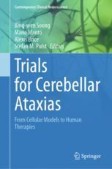Search
Search Results
-
Relationship of Sulfatides Physiological Function and Peroxisome Proliferator-Activated Receptor α
Sulfatides are unique sphingolipids present in the serum and the plasma membrane. Sulfatides exert important functions in a number of systems in the...
-
Spatial lipidomics reveals brain region-specific changes of sulfatides in an experimental MPTP Parkinson’s disease primate model
Metabolism of MPTP (1-methyl-4-phenyl-1,2,3,6-tetrahydropyridine) to the neurotoxin MPP + in the brain causes permanent Parkinson’s disease-like...

-
Elucidating the Therapeutic Utility of Olaparib in Sulfatide-Induced Human Astrocyte Toxicity and Neuroinflammation
Metachromatic leukodystrophy (MLD) is a severe demyelinating, autosomal recessive genetic leukodystrophy, with no curative treatment. The disease is...

-
Tumor ratio of unsaturated to saturated sulfatide species is associated with disease-free survival in intrahepatic cholangiocarcinoma
PurposeCholangiocarcinoma (CCA) is a malignancy arising from the bile duct epithelium and has a poor outcome. Sulfatides are lipid components of...

-
Sulfatide imaging identifies tumor cells in colorectal cancer peritoneal metastases
Even with systemic chemotherapy, cytoreductive surgery (CRS), and hyperthermic intraperitoneal chemotherapy (HIPEC), peritoneal metastases (PM)...

-
Human Endogenous Retrovirus Type W Envelope from Multiple Sclerosis Demyelinating Lesions Shows Unique Solubility and Antigenic Characteristics
In multiple sclerosis (MS), human endogenous retrovirus W family (HERV-W) envelope protein, pHERV-W ENV, limits remyelination and induces...

-
Olaparib Attenuates Demyelination and Neuroinflammation in an Organotypic Slice Culture Model of Metachromatic Leukodystrophy
Metachromatic leukodystrophy (MLD) is a severe demyelinating, autosomal recessive genetic leukodystrophy. The disease is underpinned by mutations in...

-
Neuronal Ganglioside and Glycosphingolipid (GSL) Metabolism and Disease
Glycosphingolipids (GSLs) are a diverse group of membrane components occurring mainly on the surfaces of mammalian cells. They and their metabolites...
-
State of knowledge on ammonia handling by the kidney
The disposal of ammonia, the main proton buffer in the urine, is important for acid–base homeostasis. Renal ammonia excretion is the predominant...

-
Toward newborn screening of metachromatic leukodystrophy: results from analysis of over 27,000 newborn dried blood spots
PurposeMetachromatic leukodystrophy (MLD) is a lysosomal storage disorder caused by the deficiency of arylsulfatase A (ARSA), which results in the...

-
Biochemical and molecular analysis of pediatric patients with metachromatic leukodystrophy in South China: functional characterization of five novel ARSA variants
Metachromatic leukodystrophy (MLD) is a rare hereditary neurodegenerative disease caused by deficiency of the lysosomal enzyme arylsulfatase A...

-
Mass Spectrometry Analysis of the Human Brain Sphingolipidome
In recent decades, mass spectrometry-based lipidomics has provided a fertile environment for scientific investigations of biochemical and mechanistic...
-
Identification of a Novel ARSA Gene Mutation Through High-Throughput Molecular Diagnosis Method in Two Girls with Late Infantile Metachromatic Leukodystrophy
Metachromatic leukodystrophy (MLD) is a rare leukoencephalopathy caused by pathogenic mutations in the ARSA gene. It manifests as severe motor...

-
Lipid Profiling in Alzheimer’s Disease
The human brain is the organ with the most lipids after adipose tissues. The rich heterogeneity of the neural lipidome is being actively investigated...
-
The Role of Sulfatides in Axon–Glia Interactions
Myelin is heavily enriched in lipids (comprising approximately 70% of its dry weight), and the amount of cholesterol and glycolipids is higher than...
-
Metabolic Treatments of Cerebellar Ataxia
Metabolic causes of cerebellar ataxia encompass all categories of inherited metabolic diseases, i.e., accumulation and deficiency of small or complex...
-
Functional Impairment of the Nervous System with Glycolipid Deficiencies
Patients with nervous system disorders suffer from impaired cognitive, sensory and motor functions that greatly inconvenience their daily life and...
-
The major TMEM106B dementia risk allele affects TMEM106B protein levels, fibril formation, and myelin lipid homeostasis in the ageing human hippocampus
BackgroundThe risk for dementia increases exponentially from the seventh decade of life. Identifying and understanding the biochemical changes that...

-
Expression and Purification of Active Monomeric MMP7
MMP7 is the smallest member of the MMP family and plays multiple physiological and pathological roles through interaction with a variety of...
-
Evidence for alterations in lipid profiles and biophysical properties of lipid rafts from spinal cord in sporadic amyotrophic lateral sclerosis
AbstractAmyotrophic lateral sclerosis (ALS) is an age-dependent neurodegenerative disease affecting motor neurons in the spinal cord and brainstem...

